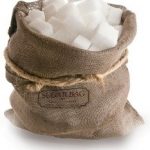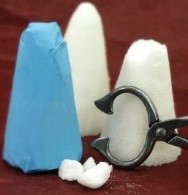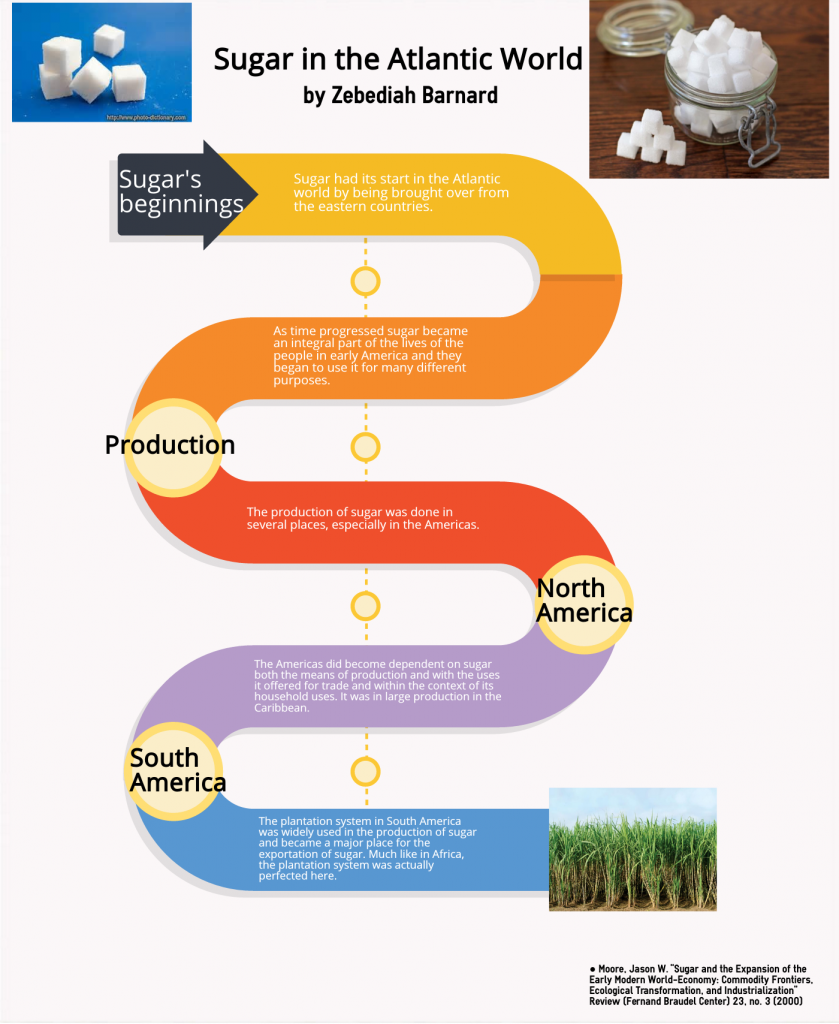Sugar in the Atlantic World & What It Represented
Zebadiah Barnard // AMH 4112.001 – The Atlantic World, 1400-1900

Sugar as we know it today is a product found in a grocery store and that has many uses – such as for cooking, flavoring food, and preservation – for people in their everyday lives. For most people, the use of sugar is in cooking, and this would have been the case in the early modern period too.

In the Ready Money account for 1760-1761 in the Colchester ledger of the Glassford and Henderson store, sugar was a commodity that was pretty much constantly in demand and pretty much consistently purchased and paid for with cash.[1] This commodity did not necessarily come in the powdered form that most people are familiar with today but was sold in cone-shaped bricks and had to be shaved, or nipped, off to be used by cooks.

Before being imported to the colonies, the sugar cane was grown on plantations, first in the Atlantic Islands off the coast of Africa and then in the Caribbean. It was a part of the plantation complex that relied on the trade of raw materials, manufactured goods, and slavery.[2] As a result, this simple product affected the economy on a much larger scale and became ingrained in the way people lived their lives.[3] The ready money account shows that people were buying sugar pretty consistently, and while not in huge quantities, its purchase reinforces its use in the everyday given it was usually sold in weights of only 2 to 3 pounds. There was, however, a single purchase of an entire barrel of sugar weighing 599 pounds!

The price of the sugar at about 9 pence per pound suggests that it was a commodity that was more in line with a necessity item rather than a luxury. Sugar seemed likely to be used in the same way that we use it today in many of our food stuffs.[4] The uses and function of sugar, economically, from the early modern period seem to indicate that this product played a much more vital role for which most people would initially give it credit.
[1] Alexander Henderson, et. al. Ledger 1760-1761, Colchester, Virginia folio 13 Credit, from the John Glassford and Company Records, Manuscript Division, Library of Congress, Washington D.C.
[2] Thomas Benjamin. The Atlantic World: Europeans, Africans, Indians and their Shared History, 1400-1900. Cambridge, England: Cambridge University Press, 2009
[3] Jason Moore. “Sugar and Expansion in the early Modern World Economy: Commodity Frontiers, Ecological Transformation, and Industrialization.” Review (Fernand Braudel Center) 23, no.3 (2000): 409-33. Accessed 10 November 2016. http//:www.jstor.org/stable/pdf/40241510.pdf
[4] Woodruff D. Smith. “Complications of the Commonplace: Tea, Sugar, and Imperialism.” Journal of Interdisciplinary History 23, no.2 (1992): 259-78. doi: 10.2307/205276
